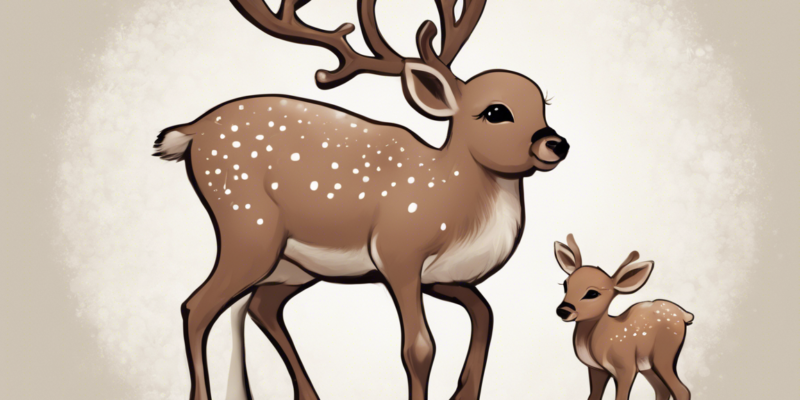Introduction
Allow me to introduce you to Martha, a charming and endearing baby reindeer who has captured the hearts of many. Martha is not just any ordinary reindeer; she represents the beauty and wonder of wildlife in its purest form. In this article, we will delve into Martha’s story, her unique characteristics, and the importance of protecting her species and their natural habitat.
Martha’s Background
Martha was born in the heart of the Arctic wilderness, amidst snow-covered landscapes and icy winds. She belongs to the Rangifer tarandus species, commonly known as reindeer or caribou. These majestic creatures are known for their long antlers, agile movements, and resilience in harsh environments.
Physical Characteristics
Martha is a sight to behold with her soft, brown fur, gentle eyes, and delicate hooves. As a baby reindeer, she is full of energy and curiosity, often frolicking in the snow and exploring her surroundings. Despite her small size, Martha exudes a sense of grace and strength that is characteristic of her species.
Behavior and Habitat
Reindeer like Martha are social animals that live in herds, roaming vast expanses of tundra and forests in search of food. They are herbivores, feeding on vegetation such as lichen, moss, and grass. Martha and her herd migrate seasonally to find the best grazing grounds and to avoid predators.
Threats to Reindeer Population
While Martha embodies the spirit of resilience, her species faces numerous threats in the modern world. Climate change is one of the most pressing issues affecting reindeer populations, as warming temperatures impact their habitat and food sources. Additionally, habitat loss due to human development and poaching pose significant risks to reindeer populations worldwide.
Conservation Efforts
To protect Martha and her fellow reindeer, conservationists and wildlife organizations are working tirelessly to preserve their natural habitats and raise awareness about the importance of coexisting with these majestic animals. By supporting sustainable practices and advocating for wildlife protection, we can ensure a brighter future for Martha and her species.
Conclusion
In conclusion, Martha represents the beauty and resilience of reindeer in the face of adversity. By appreciating her presence in the natural world and taking steps to protect her species, we can ensure that future generations will have the opportunity to witness the wonder of these magnificent creatures. Let Martha’s story inspire us to cherish and protect all living beings that share our planet.
FAQs about Martha and Reindeer
-
What is the difference between reindeer and caribou?
Reindeer and caribou are the same species (Rangifer tarandus), but the term “reindeer” is typically used to refer to domesticated individuals, while “caribou” is used for wild populations. -
Do reindeer really fly with Santa’s sleigh on Christmas Eve?
The idea of flying reindeer pulling Santa’s sleigh is a beloved holiday tradition, but in reality, reindeer do not have the ability to fly. -
How fast can reindeer run?
Reindeer are known for their impressive speed and agility, capable of running up to 50 miles per hour. -
What is the lifespan of a reindeer?
In the wild, reindeer can live up to 15 years, while those in captivity may live longer. -
Are reindeer endangered?
While some populations of wild reindeer are considered threatened or endangered, overall, the species is classified as “Least Concern” by the IUCN. -
Do reindeer shed their antlers?
Yes, male reindeer shed their antlers after the mating season, while female reindeer retain theirs throughout the winter. -
Why are reindeer important to ecosystems?
Reindeer play a crucial role in their ecosystems by grazing on vegetation, which helps control plant growth and nutrient cycling in arctic and subarctic regions. -
Can reindeer swim?
Reindeer are excellent swimmers and can cross rivers and lakes during their seasonal migrations. -
How do reindeer adapt to cold climates?
Reindeer have several adaptations for surviving in cold environments, including thick fur, specialized hooves for walking on snow, and a thick layer of insulating fat. -
What can we do to help protect reindeer populations?
To help protect reindeer and their habitats, individuals can support conservation efforts, reduce their carbon footprint to combat climate change, and advocate for sustainable land use practices.


Comments